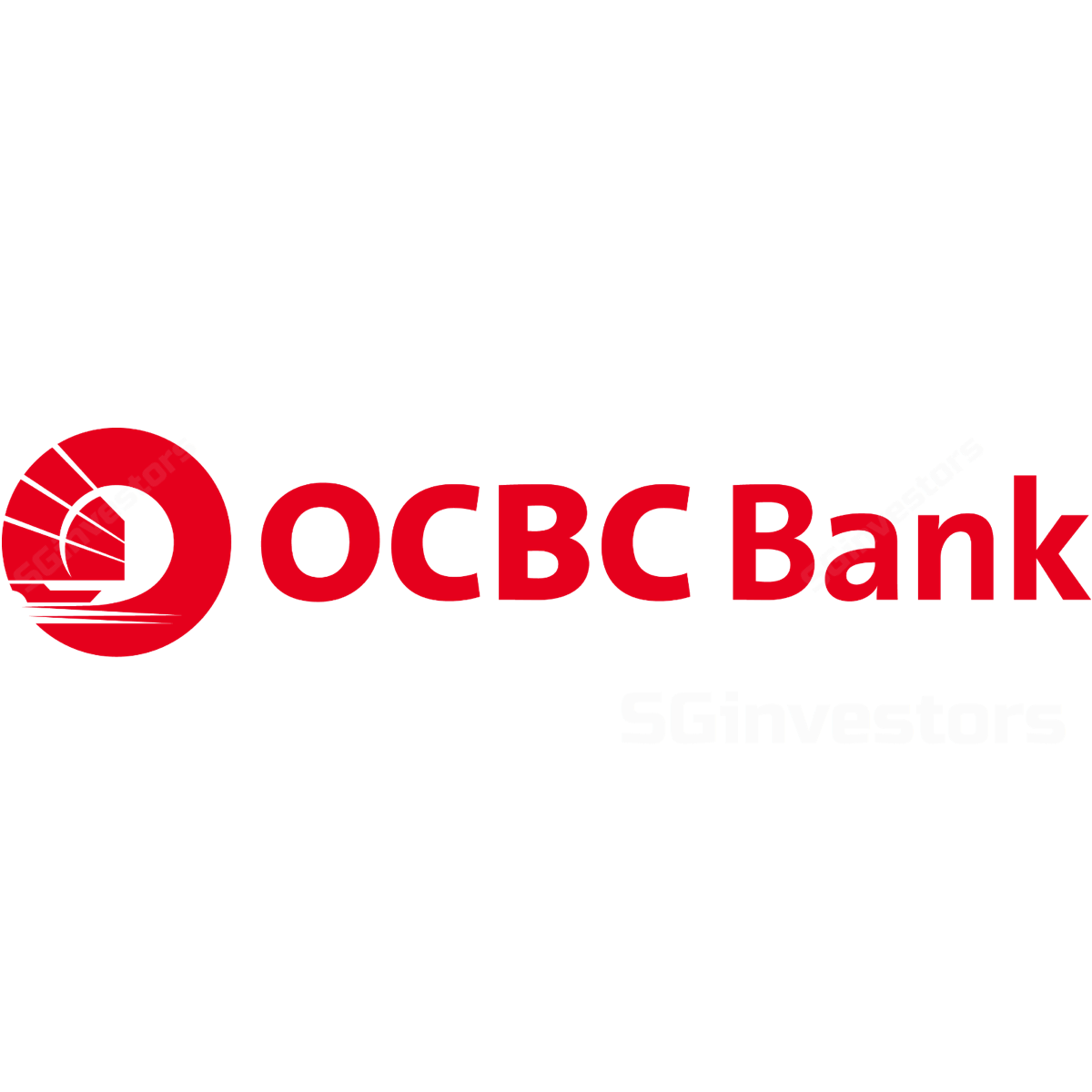 OVERSEA-CHINESE BANKING CORP (SGX:O39)
OVERSEA-CHINESE BANKING CORP (SGX:O39)
OCBC Bank - Dragged By Insurance Contributions
- OCBC's net profit declined 43% y-o-y/ 44% q-o-q to S$698m on poorer insurance performance and higher provisions.
- NIM compression to accelerate into FY20F.
- Guiding for higher credit costs of 100-130bps through FY21F.
Insurance performance weighs on results
Net profit declined by 43% y-o-y to S$698m.
- OCBC (SGX:O39) reported lower revenue of S$2,490m (-7% y-o-y/-15% q-o-q) as weakness in non-interest income weighs on earnings. With higher provisions of S$657m (+156% y-o-y/+121% q-o-q), net profit declined 43% y-o-y/44% q-o-q to S$698m, missing consensus estimates.
- Operating costs were well-maintained at +1% y-o-y/-12% q-o-q, as cost-to-income ratio increased to 44.5% (4Q19: 43.3%) on lower revenue.
- Capital ratios remained strong with CET1 and total CAR at 14.3%/16.4% respectively.
Net interest income improves.
- Net interest income of S$1,626m improved 6% y-o-y/1% q-o-q, driven by loan growth (+2% q-o-q) against declining NIM (1bps lower q-o-q to 1.76%). During 1Q20, OCBC benefitted from higher repricing in some USD loans by switching to cost of funds benchmark which were inbuilt into loan contracts.
Dragged by non-interest income:
- Wealth & brokerage failed to mitigate MTM losses, insurance income drop. Non-interest income of S$864m declined 24% y-o-y/34% q-o-q. While fee income improved 10% y-o-y on wealth management and brokerage income, net trading income declined 94% y-o-y dragged by unrealised MTM losses in Great Eastern Holdings (SGX:G07)'s investment portfolio, offsetting increase in treasury-related customer flow.
- Meanwhile, insurance income declined 43% y-o-y due to weak investment performance at Great Eastern Holdings.
- Assets under management at Bank of Singapore decreased 12% q-o-q to US$104bn, largely on mark-to-market losses due to negative market actions.
Oil and gas (O&G) sector accounts for 5% of total loans.
- According to OCBC, oil and gas accounts for 5% of loan book (~S$13bn), loans to shipping sector (ex OSV) make up 2% of loan book, while commodity sector loans account for 6% of loan book. Among the loans to O&G sector, c.35% are to the offshore support vessel (OSV) subsector. Within the OSV exposures, 50-60% of loans are extended to Singapore Inc corporates and National Oil Companies. The remaining OSV exposures are to local and regional companies, of which 85% have been classified as NPLs with appropriate provisions taken ( > 50% provisions have been taken).
- We understand that the non-NPLs belong to three local names which are pretty strong in their own right. Another ~25% of loans are extended to traders. Two traders have financial irregularities, of which special provisions have been written for one trader this quarter. It was indicated that OCBC has relatively small exposure to the second trader; and, its exposure is supported by export documents which have been accepted. As such, the risk has been shifted to the receiving banks. There is a third name that has been put on the watch list. The remaining exposures in O&G sector are to upstream and downstream sectors.
Total credit costs spiked as general allowances are shored up.
- Total allowances of S$657m represents higher total credit costs at 86bps (FY19: 25bps). General allowances were higher q-o-q at S$382m, representing 50-bp credit costs (4Q19: S$- 64m, -8bps) as OCBC significantly increased macro-economic variable (MEV) adjustments to buffer for stresses expected against the recessionary market outlook.
- Special allowances were higher q-o-q at S$275m, representing 36-bp credit costs (4Q19: S$271m, 35bps) largely due to a Singapore-based corporate customer in the oil trading sector. Total NPA coverage increased to 90% (from 86%) due to higher provisions taken in the quarter.
NPL ratio ticked up slightly.
- NPL ratio increased 7bps q-o-q to 1.52%, largely due to the downgrade the Singapore customer mentioned above. OCBC expects near-term economic weakness and uncertainty to raise NPL ratio to between 2.5% and 3.5%. Given the increase in provisions, total NPA coverage increased to 90% (from 86% in 4Q19).
Key takeaways from analyst briefing
Higher credit costs guided.
- Management is guiding for 100- 130bps of credit costs over the next two years (~S$3- 3.5bn).This quarter saw high provisions due to management overlay on top of macroeconomic variable (MEV) adjustments.
- The actual split between FY20F and FY21F provisions depends on market development. Additional management overlay has been taken in view of OSV NPLs as well.
NIM compression.
- Repricing of mortgage book in Singapore (on lower rates) will happen towards end of the year. OCBC continues to focus on building CASA and shift to longer-tenure loans as well as asset composition, while expecting NIM compression in subsequent quarters from full effects of rate cuts. Going forward, OCBC expects loan growth to be muted for the year excluding foreign currency impact.
Dividend outlook.
- Management has reiterated that the comfortable range for CET1 ratio is 12.5-13.5%, and the bank would prefer to land on the higher side of the range. While dividend policy is to pay sustainable and growing dividends in line with long-term growth prospects, there is currently no conclusion surrounding dividends.
- Management reiterated that the intention is still to pay an interim dividend in 1H20 subject to financial performance. OCBC Wing Hang Bank’s IRAB implementation will see ~S$7.5bn RWA savings (3.3% of 1Q20 RWA), with expected timeline for full implementation subjected to regulatory approval, targeting 2H20 or 1H21.
Valuation and recommendation
- We see limited catalysts for the stock in the near term. Our S$7.90 Target Price is pegged to c.0.7x FY21F P/BV, which is at GFC valuation trough, due to asset quality concerns. Current dividend yield is at c.5.2%.
- See OCBC Share Price; OCBC Target Price; OCBC Analyst Reports; OCBC Dividend History; OCBC Announcements; OCBC Latest News.
- Our earnings revisions of -8 to -9% through FY21F is largely on higher credit costs assumptions, as we pull back non-interest income assumptions on the back of slower insurance showing.
Rui Wen LIM
DBS Group Research
|
https://www.dbsvickers.com/
2020-05-08
SGX Stock
Analyst Report
7.900
SAME
7.900

